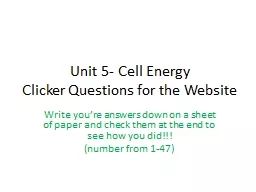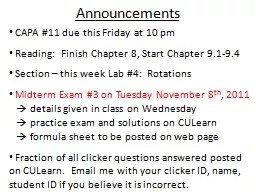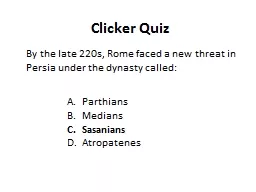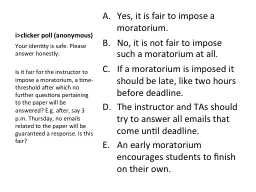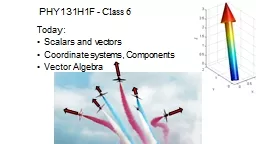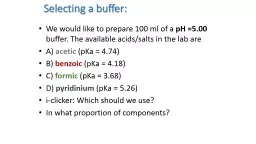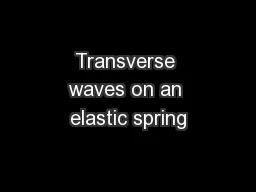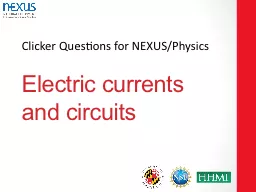PPT-Unit 5- Cell Energy Clicker Questions for the Website
Author : test | Published Date : 2020-04-06
Write youre answers down on a sheet of paper and check them at the end to see how you did number from 147 1 What 2 things will stop enzymes Temperature amp time
Presentation Embed Code
Download Presentation
Download Presentation The PPT/PDF document " Unit 5- Cell Energy Clicker Questions f..." is the property of its rightful owner. Permission is granted to download and print the materials on this website for personal, non-commercial use only, and to display it on your personal computer provided you do not modify the materials and that you retain all copyright notices contained in the materials. By downloading content from our website, you accept the terms of this agreement.
Unit 5- Cell Energy Clicker Questions for the Website: Transcript
Download Rules Of Document
" Unit 5- Cell Energy Clicker Questions for the Website"The content belongs to its owner. You may download and print it for personal use, without modification, and keep all copyright notices. By downloading, you agree to these terms.
Related Documents

